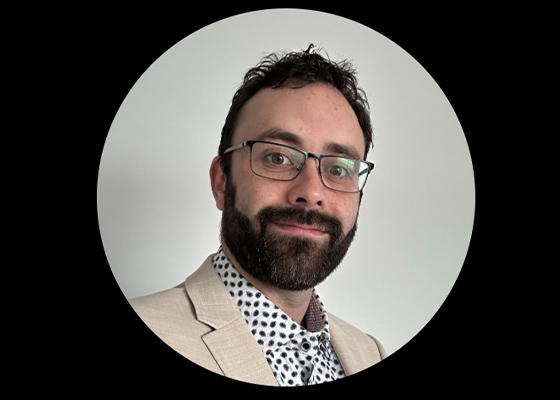
Military training can save lives, change history, and halt oppression, but when members of the Canadian Armed Forces leave the service and put that training towards furthering their education as a civilian, its true value can sometimes be unclear.
That is the issue being studied in an applied research project conducted by Portage College Associate Vice President Academic Don Moore and the Canadian Military Veteran and Family Connected Campus Consortium (CMVF3C). A national collaboration among representatives of post-secondary institutions, the Canadian Armed Forces, Veterans Affairs Canada, and supporting organizations, CMVF3C’s mandate is to improve training and education opportunities for military members, Veterans, and their families.
The applied research project, “Best Practices for Military Education and Training within the Ontario Postsecondary System” intends to develop pathways for those entering or within the military to find equitable training in Canada’s post-secondary education system, says Moore.
A researcher and educator at the northern Alberta college, a CMVF3C committee member, and the lead on a Military Training Equivalency sub-committee, he would like to see a more consistent approach for recognizing military experience in post-secondary settings.
“There have been questions about when folks leave, to what extent their training in the military can be recognized within a civilian environment. At the same time, there are questions about how well we can align things together for pathways into the armed forces,” he said.

Don Moore
The project is being conducted with the assistance of Dr. Suzette Brémault-Phillips, a professor at the University of Alberta, and Principal Investigator and Chair of the CMVF3C.
She sees the research as a win-win for people transitioning into and from military service.
“Leveraging post-secondary education in support of those in active service better equips the Canadian Armed Forces to respond when called upon. Supporting those transitioning into life after service enhances our civilian communities,” noted Brémault-Phillips. “We need research, though, to identify best practices and pathways, and to inform policy and practice change.”
Although Moore and Brémault-Phillips live and work in Alberta, her involvement with CMVF3C and Moore’s experience with the post-secondary transfer system and building similar pathways for the Skilled Trades in Alberta drew attention from Ontario officials. With more than one-third of CAF members residing in Ontario, the researchers say it’s a province that has a great opportunity to pair Canadian Armed Forces training with post-secondary education. As shown in Ontario’s 2024 Honouring Veteran’s Act, it’s also a province that has made a significant commitment to expand recognition of veterans.
With $150,000 in funding from the Ontario Council on Articulation and Transfer (ONCAT), the research project is aimed at understanding the mechanisms and practices that exist within the Ontario post-secondary system and beyond to pave the way for greater engagement between the post-secondary system and the Canadian military.
Canadian post-secondary institutions do offer some pathway connections between post-secondary and military training, but not on a systemic level. At Portage College, for example, the Practical Nursing program shares training alignment with an Operating Room Technician in the military. While Portage College and some other Canadian institutions offer credit equivalencies for many areas of military training, the process can be sporadic and institution-specific, with little consistency between institutions, much less at a national scale.
Similar systems linking military and education already exist in the US and Australia.
Moore, who has had generations of family serving in the military, spent time as a civilian employee of the Canadian Armed Forces himself, and currently has a career in a post-secondary setting, says the lack of a Canadian equivalent has been a challenge for many members and veterans. The issue of military training equivalencies has become a focus of several provincial and national committees he sits on, including the CMVF3C.
The research, Moore says, involves the exploration and review of which post-secondary institutions in Canada’s most populous province provide credit recognition for military training, how they provide it, how it is made publicly accessible, and what current best practices are in place.
The goal for the research is to support greater post-secondary engagement with Military training, as well as consistency in the sector.
Moore and Brémault-Phillips expect to complete the initial phase of the project by mid-2026.
According to Canada’s Department of National Defence, there are approximately 68,000 Canadians currently on active duty with the Canadian Armed Forces and 27,000 in reserve capacities. Each year there is a change-over of approximately 5,000 personnel, entering and leaving the Canadian military. Many of those leaving are looking to expand on their training, continue their careers or find new ones. Without a system in place, that process can be daunting for many.
“We’re trying to look at it from a systems lens,” said Moore. “Rather than focusing on one person in one situation, we want to build a system that’s easily replicable for anyone coming out of the military.”
While the results of the research project could create pivots and shifts in the general scope of the project, he says the overall goal remains the same – to give back to people who give so much to the country.
“The Armed Forces are such a critical component of Canada, and the more we can find ways for these kinds of systems to work easily, the better it is for our military members and the country as a whole.”
Groups looking for more information about this project or wishing to discuss new research projects in collaboration with Portage College can contact Portage College's Director of Applied Research Cristina Holguin at 780-623-5520 or email at Cristina.Holguin@portagecollege.ca
